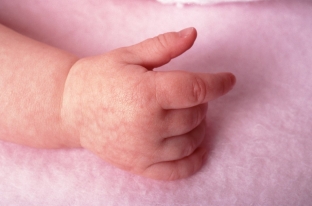Summer is not only a warm and pleasant time of the year, but also the season of various skin diseases that are often activated at this time of the year, especially in children. If the baby suddenly began to be disturbed by burning and itching on the skin, a rash or blisters appeared, this is a reason for an immediate visit to the doctor. The cause of this phenomenon may be dermatosis. The roots of this disease are so different that only a specialist can establish them. What do parents need to know if such a problem occurs and what symptoms to look out for?
Causes of dermatosis in children
Most often, dermatosis is a manifestation of acute toxic or allergic reactions of the child's body. Although this disease can overtake at any age. It can be activated if there are problems with the immune or endocrine systems. Also, dermatosis can be triggered by viruses, bacteria or fungal infections. In addition, the disease can be caused by pathogenic microorganisms and insect bites.
The delicate skin of a child reacts sharply to many irritants, so it can also be attributed to the causes of the disease:
• Preservatives, various acids, metals;
• Animal hair, poison of some insects, pollen of plants;
• Sudden change in temperature;
• Excessive rubbing or pressure of clothing against baby's skin.
If a child is very sensitive to allergens, then any of the above factors can easily cause dermatosis.
Symptoms of dermatosis in children
With dermatosis, areas of the skin of the entire body of the baby can be affected, confirms estet-portal.com. However, the types of rashes with different sources of the disease are different. These can be:
• Erosions or blisters;
• The appearance of spots or various plaques;
• Ulcers, pustules and scars.

It is by the type of skin reaction that one can determine which dermatosis they belong to. If at the same time itching appears on the skin, then the disease most likely arose due to an allergic reaction. At the same time, the allergen that caused it is quite difficult to establish, since everything is individual. If contact with him is not stopped, then the dermatosis will occupy an ever larger area.
Allergic dermatoses can also be of a different nature and are divided into:
• Atopic (congenital);
• Toxic-allergic (dislocated throughout the body, may be accompanied by itching and fever);
• Contact (manifested in places of contact with allergens);
• Erythema (characterized by the appearance of pink plaques, sometimes with elevations reaching an area up to 8 cm)
Blister dermatoses are usually associated with diseases of the immune system and the formation of blisters on the skin and mucous membranes. They can also move from one place to another. They can be caused by infectious diseases and viruses, metabolic disorders.
Dermatoses of a viral nature are determined by the presence of genital warts, herpes, Candida mollusk, warts.
Small children develop diaper dermatosis, which occurs with inadequate hygiene (prolonged contact of the baby's skin with urine and feces), allergies to diapers, etc.
They may also be susceptible to seborrheic dermatosis, which is based on the scalp of a child in the form of crusts of a white or yellowish hue and is usually provoked by a fungal infection.
Atopic dermatosis in a child is usually congenital. It manifests itself in the form of vesicles containing pus, at the opening of which a crust appears. Usually it cannot be completely cured, only the symptoms of this disease can be treated from time to time.
Treatment of dermatosis in children
Usually, contact dermatoses caused by allergens go away on their own if the irritant is identified and removed from the contact area in time. Other types of dermatoses are treated depending on the origin of the disease, however, the principle of treatment remains approximately the same:
• Prescribing antihistamines;
• Development of a diet and its observance;
• Allergen identification and exclusion of contact with it;
• Application of skin softeners;
• Administration of hormonal (corticosteroid) drugs;
• Compliance with the rules of hygiene.
Do not self-treat dermatosis, especially in babies. All of these symptoms can be the cause of not only a skin infection, but other diseases. Therefore, only an experienced specialist can make a correct diagnosis and determine the correct methods of treatment.
Be attentive to your children with estet-portal.com.








Add a comment